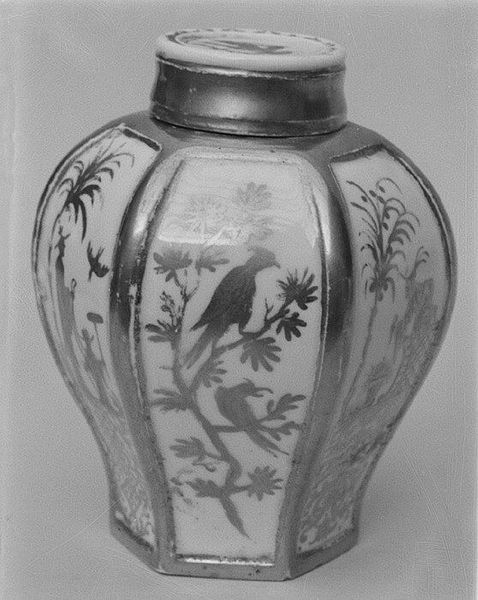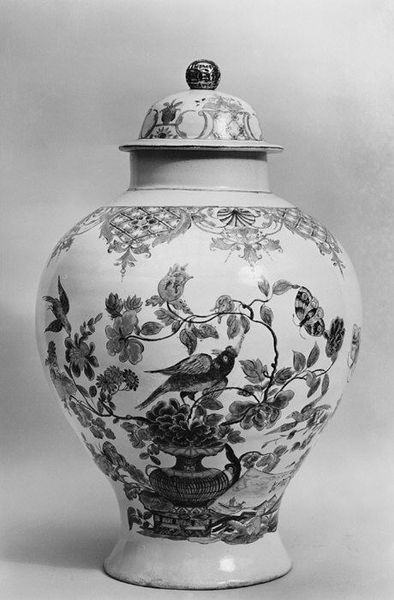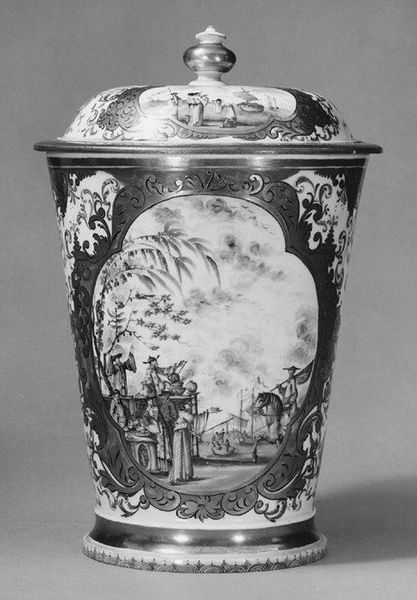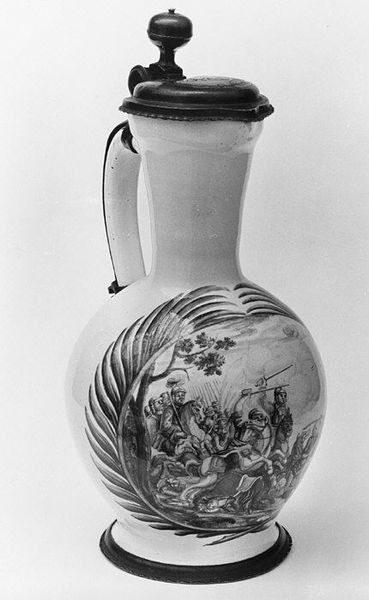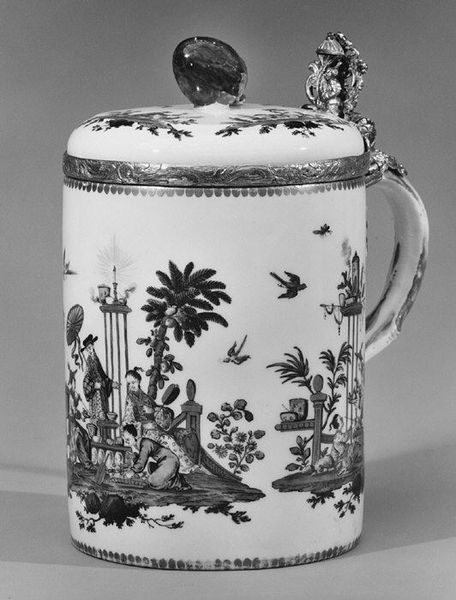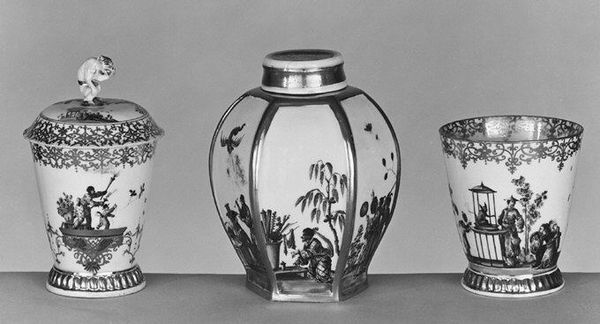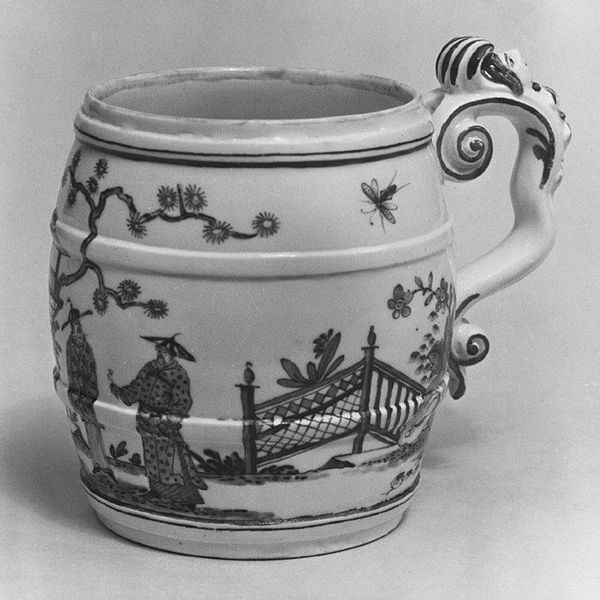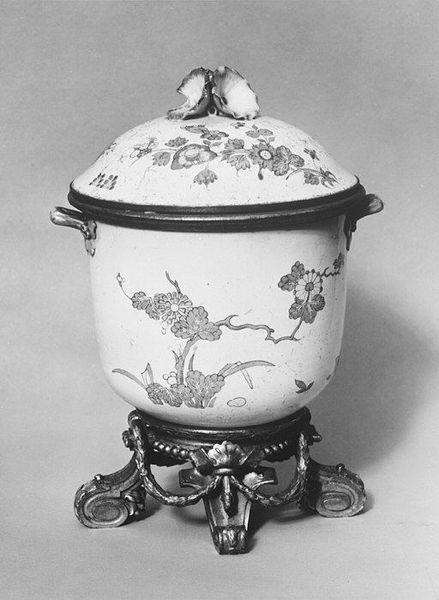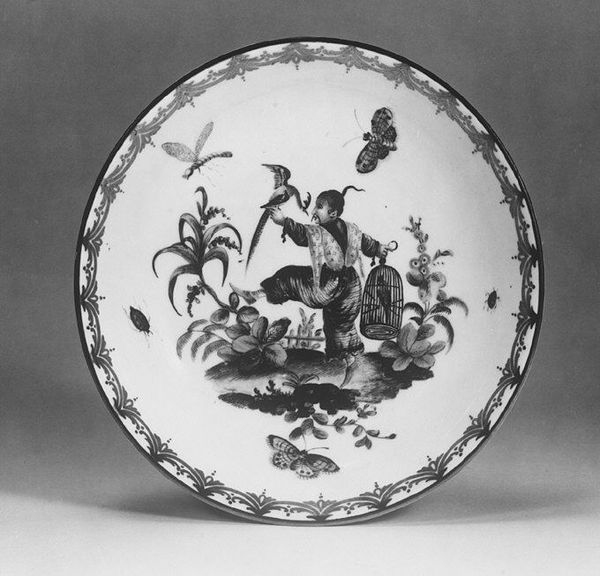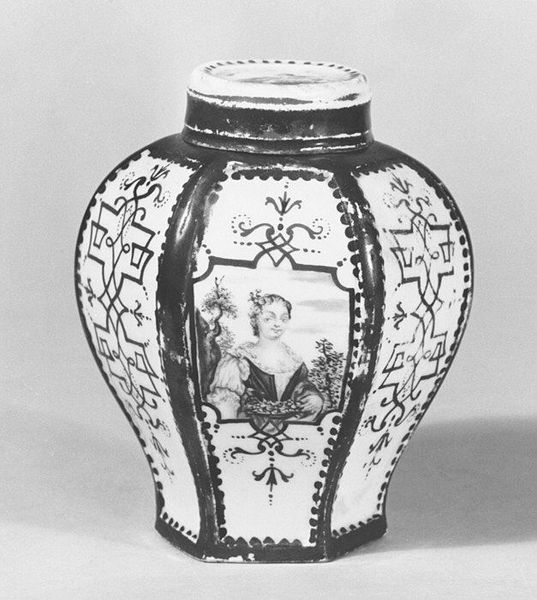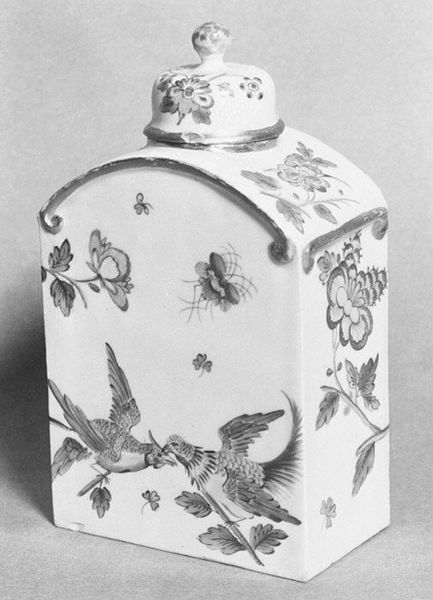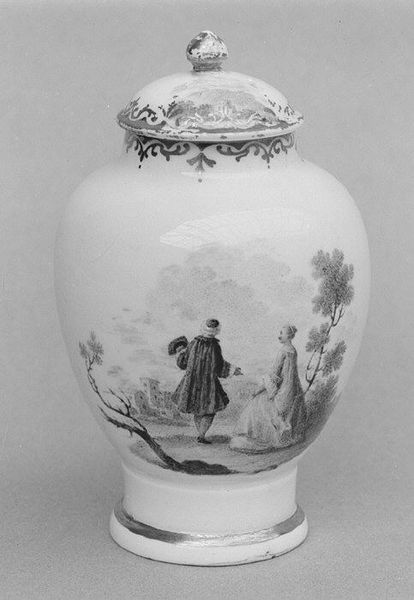
ceramic, porcelain, sculpture
#
asian-art
#
ceramic
#
bird
#
porcelain
#
figuration
#
sculpture
#
decorative-art
#
rococo
Dimensions: Height: 4 in. (10.2 cm)
Copyright: Public Domain
Curator: This delightful piece before us is a tea caddy, crafted at the Meissen Manufactory between 1720 and 1730. Editor: I am immediately drawn to the octagonal facets. The alternating figural scenes present a pleasing rhythmic pattern. Curator: Indeed. It exemplifies Rococo aesthetics with its delicate porcelain material, figuration, and ornate decorations. It's fascinating how Meissen emulated Asian porcelain traditions, incorporating figures and botanical motifs. Editor: Speaking of material, the porcelain itself demands consideration. How was this European take on porcelain, often called 'white gold', produced and for whom? It's less about simple mimicry, and more a cultural negotiation manifested through alchemical-like experimentation. Curator: The surface decorations, though seemingly picturesque, evidence careful spatial arrangement and precise brushwork. The figures are rendered with a stylistic sophistication that adds to the caddy’s elegance. Editor: And if we trace its supply chains back—the mining of kaolin, transportation, and firing process, alongside the division of labor within Meissen. Imagine how these details impact the narrative of this vessel, shaping our understanding of global trade during its manufacture. It held value because of its physical and artistic features. Curator: Considering these pictorial fields, a certain orientalism emerges, not unlike what we find with chinoiserie. A highly idealized, perhaps even fantastical East represented on a domestic object, which allows for intriguing interpretations. Editor: Yes, what are the socio-political conditions that afforded for German-produced porcelain imitating Chinese designs? This interplay reflects desires, status, and the cultural economies of the period. We should address such histories of commodification in European decorative arts. Curator: In short, this small vessel encapsulates an aesthetic fascination for far-flung lands. It presents an excellent encapsulation of Rococo style that would appeal to any 18th century aristocratic household. Editor: For me, it's about grasping how materials tell a story – porcelain as a material witness bearing the complex threads of its origin.
Comments
No comments
Be the first to comment and join the conversation on the ultimate creative platform.
